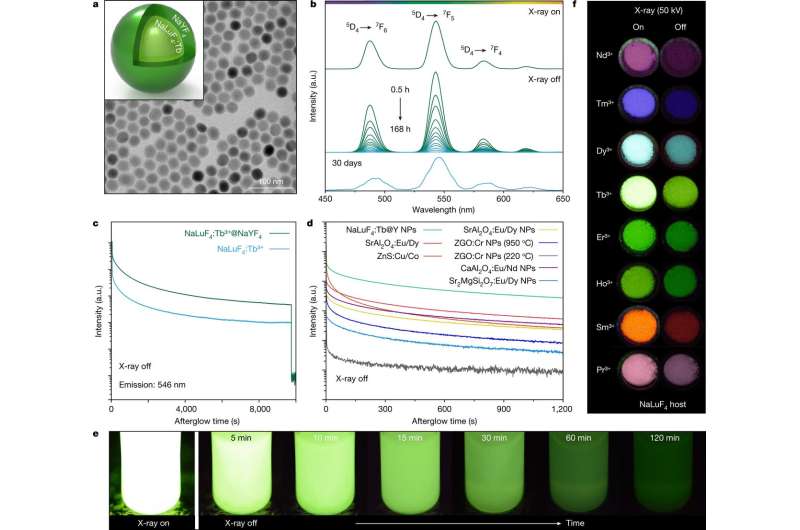February 18, 2021 report
Using persistently luminescent nanocrystals to create 3-D X-rays

A team of researchers with members from China and Singapore has found that it is possible to use persistently luminescent nanocrystals to create 3-D X-rays. In their paper published in the journal Nature, the group describes a means for creating nanocrystals that can hold onto excited charge carriers, and how they used those crystals to fashion a bendable sheet that could be used to create 3-D images using X-rays. Albano Carneiro Neto and Oscar Malta, with the University of Aveiro and the Federal University of Pernambuco, respectively, have published a News & Views piece in the same journal issue outlining the history of 3-D X-ray research and the work done by the team with this new effort.
As Carneiro Neto and Malta note, two-dimensional X-ray imaging has been around for over 100 years—3-D X-ray imaging, on the other hand, has remained elusive. In this new effort, the researchers have developed a method for creating 3-D X-ray images under certain conditions.
The work by the team started with the study of certain kinds of luminescent crystals, most of which contained phosphors; some of them have been used in bio-detectors and nanothermometry. Prior research has shown that under certain conditions, they can glow for a few seconds after they are struck by light. Prior research has also shown that it is likely such materials are able to retain their glow because of small defects that trap excited charge carriers. In their work, the researchers found that lanthanide-containing nanocrystals could hold excited charge carriers for several weeks—they embedded several of them in a flexible material to create a bendable X-ray detector. They then partially wrapped the detector around an object (a circuit board) and fired X-rays at it. Testing showed their device capable of producing 3-D images of the circuit board.
The researchers acknowledge that several issues will have to be resolved before a device based on their work could make its way into medical applications—sensitivity must be improved, for example. And a better understanding of the means by which the defects hold the charge carriers is needed to ensure that such devices would be safe to use on people.
More information: Xiangyu Ou et al. High-resolution X-ray luminescence extension imaging, Nature (2021). DOI: 10.1038/s41586-021-03251-6
Journal information: Nature
© 2021 Science X Network




















